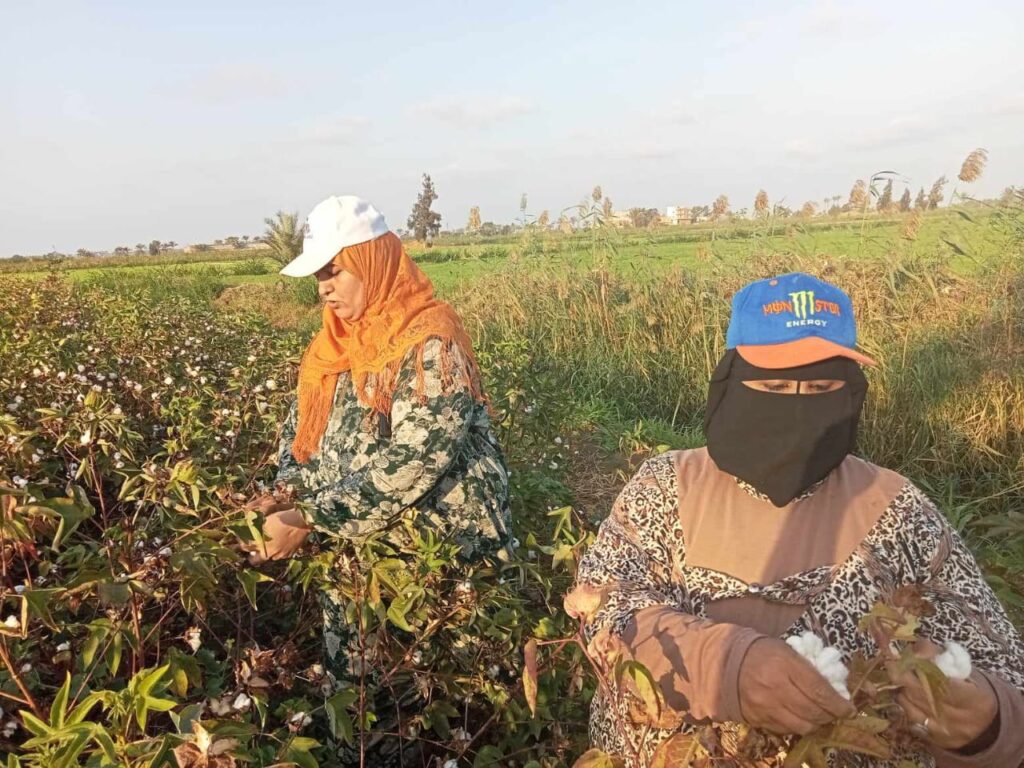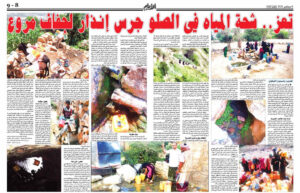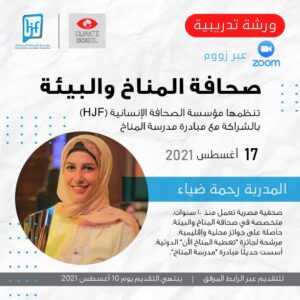Prepared by - Khaled Warbi
Sahar Gad, 52 years old, a farmer in the village of Kafr al-Ghab in the Kafr Saad center in Damietta Governorate, is accustomed to working more than 12 hours a day in the fields, where she works for wages for the owners of agricultural lands without having the luxury of being absent from work even in the most difficult climatic conditions, saying: I work in extreme heat and in the coldest weather. If I do not go out to work one day, I will not have enough to feed the four children I have been supporting alone since I separated from my husband more than 15 years ago.
Sahar's working hours extend from six in the morning until seven in the evening, and sometimes increase during cotton collecting seasons so that she can collect large quantities of cotton, in return for which she receives 120 pounds - $2.5 - and sometimes less, as fewer working hours mean a lower daily wage, sometimes up to To 50 pounds - about 1 dollar -.
Sahar is exposed to heat stress as a result of the increasing temperatures in recent years due to climate change, which makes her vulnerable to diseases.
Sahar says: I suffered from many skin diseases as a result of working in extreme heat. I also suffered from many skin diseases, constant migraines, blurred vision, and poor eyesight, as I suffer from eye pressure as a result of working in extreme heat.
Regarding diseases resulting from heat stress, Sahar is exposed to many risks while working, and she talks about them by saying: I suffered fractures more than once while crossing the watering hole and water canals while jumping from one field to another while working, but I endure for the sake of my children.
Aya Al-Arif and her initiative to protect female farmers from heat stress
Sahar is one of thousands of female farmers who are suffering as a result of climate change and working in difficult climatic conditions in the Egyptian countryside, which made Aya Al-Arif, 38 years old, president of the Business Women’s Club in the Middle East and North Africa, funded by the Union for the Mediterranean and the United Nations Industrial Development Organization (UNIDO), think... In finding a solution to this problem, in addition to her work in the field of training women on how to deal with climate change in cooperation with the United Nations Women, through an initiative she launched to grant paid leave to farmers on the hottest days, with funding from the Atlantic Council in America.
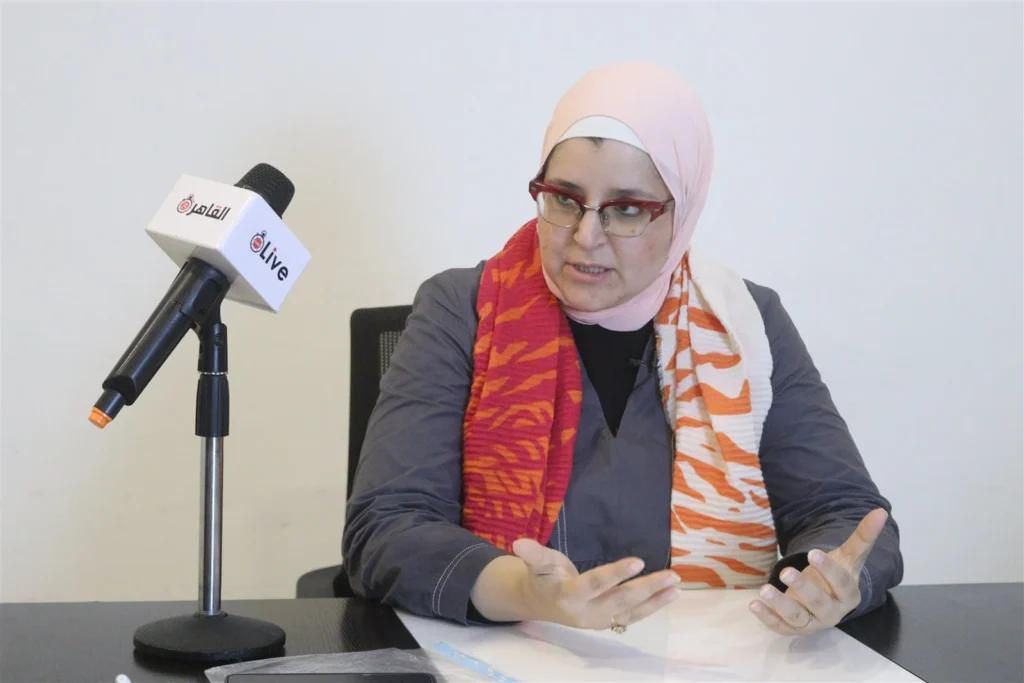
Regarding this, Aya Al-Areef explained: I was always affected by the fact that female farmers in the countryside were forced to work in light of the extreme heat, especially in Upper Egypt, which is the hottest in light of climate change. They do not have the luxury of being off work, even for one day, which exposes them to heat stress resulting from work. In this hot climate, she pointed out that the idea of the initiative crystallized during her interview with Ahmed Rushdi, one of the employees of the Atlantic Council in the United States of America, while he was at a conference in Cairo, where she discovered that there is a project targeting female farmers in the countryside in India, giving them wages for the day. In which the temperature is so extreme that it prevents them from working, they take leave on days when there is a heat wave and then return to work after that wave ends.
Aya Al-Arif presented the idea of applying this initiative to female farmers in the Egyptian countryside, and her idea received funding from the Atlantic Council in America, with the project being implemented for the first time in Egypt starting next June.
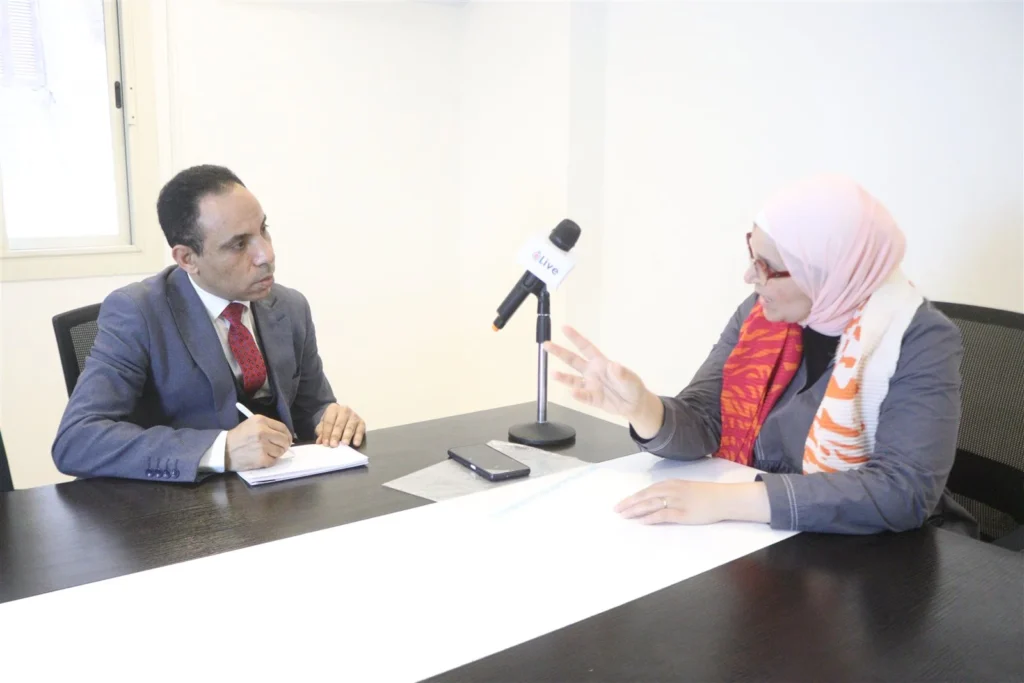
The project is expected to be implemented on 20,000 women working in the field of agriculture in Upper Egypt, as implementation begins in 4 governorates: Sohag, Assiut, Qena, and Minya, where each woman will receive an amount of 150 pounds per day on days when temperatures reach 40 degrees Celsius, through Sending her money via her electronic wallet in exchange for not working on those days to protect her from the hot climate until the heat wave ends.
The corporal adds: In addition to financial support, we will also provide them with awareness of climate change and how to conserve water, and also protect them from high heat, by giving them tools to protect them from the sun and high heat, such as hand gloves, as well as a cover to be placed on their heads to protect them from extreme heat.
Women farmers are most affected by climate change
A new report issued by the Food and Agriculture Organization of the United Nations (FAO), in March 2024, stated that climate change disproportionately affects the incomes of rural women, as they do not have the same ability to respond to and adapt to extreme climate events compared to men.
Likewise, the Climate Injustice Report points to the fact that women heads of households in rural areas of low- and middle-income countries suffer far greater financial losses every year than their male counterparts.
According to the report, female-headed households lose, on average, 8% of their income due to heat stress, and an additional 3% due to floods, compared to male-headed households. This is evidenced by a decrease in the per capita share of US$83 due to heat stress, and a US$35 decrease. due to floods, bringing the total decline to US$37 billion and US$16 billion, respectively, across all low- and middle-income countries.
Given the significant disparities in agricultural productivity and wages between women and men, the study suggests that climate change will widen these gaps significantly in the coming years unless they are addressed.

Recommendations for establishing health risk assessment systems and adaptation strategies
Researcher Mona Ezzat, Chair of the Board of Trustees of the Al-Noon Foundation for Family Care, said in statements to Cairo 24 that female farmers in Egypt are exposed to factors of high temperatures resulting from climate change, which exposes them to heat stress, as they suffer as a result of working in agricultural fields under high temperatures due to sunstroke and some Skin diseases, and they also become extremely thirsty as a result of the high temperature, which leads to major health effects, as the rates of disease among agricultural workers increase as temperatures rise.
Therefore, Mona Ezzat sees the necessity of implementing health risk assessment systems and the necessary prevention and protection systems, stressing that female farmers in Egypt have a major role in supporting the family economically, in addition to their participation in agricultural production, which also supports economic growth in Egypt.

Mona Ezzat, who also works as an economic, social and gender empowerment consultant for several international organizations, calls for the necessity of developing a strategy to adapt to climate change in Egypt, while monitoring the effects on agriculture, male and female farmers in the country, and proposing sustainable solutions for that.
A recent study issued in November 2023 entitled: Improving the Conditions of Women in the Agricultural Sector in Egypt... The Role of Policy Interventions, which is a study issued by the Alternative Policy Solutions Project, a research project affiliated with the American University in Cairo, indicates that the agricultural sector in Egypt employs about 45% women. In the labor force, as a major contributor to female employment in Egypt, informality is prevalent in the agricultural sector, with up to 94% agricultural workers dependent on informal employment.
According to the same study, the agricultural sector is responsible for 32.4% of informal employment for women, which makes women farmers vulnerable to economic shocks and volatile conditions.
The study stressed that the wage gap is widening between the genders in the agricultural sector in Egypt, as women usually work in seasonal jobs, are often from poor families, and work in unregulated conditions.
The average daily wage of a seasonal farmer in Egypt ranges between $5 and $8, which in turn exacerbates the already high poverty rate in rural areas, estimated at 32%.
For her part, Fayza Abdel-Jabbar, head of the Damietta Farmers’ Syndicate, says that climate changes, especially high temperatures, are what worries women farmers the most, as the farmer bears the responsibility of collecting and harvesting the crop and taking care of the land to contribute to supporting her husband and family, as well as female wage workers in agricultural lands who suffer greatly while working in Those difficult climatic conditions.

According to Fayza Abdel-Jabbar: I tried to enter the House of Representatives to contribute to supporting legislation supporting women, but I was not successful, but I am currently happy to work to solve the problems of female and male farmers as a farmers’ union in Damietta, especially since there are some lands that have begun to be affected by climate change, which has exposed them to desertification and desertification, in addition to supporting female agricultural workers from During my union work.
Supporting women farmers enhances resilience to climate change
This requires more initiatives, projects and programs aimed at empowering, training and supporting female farmers and reducing the gap with men, which will not only impact the lives of women but on the entire society.
This is confirmed by the FAO report, entitled: The Status of Women in Agricultural and Food Systems, which reveals that addressing inequalities in agricultural and food systems and empowering women would reduce hunger levels, strengthen the economy, and increase the ability to withstand shocks such as climate change and the Covid-19 pandemic.
The report shows that the proportion of women working in agricultural and food systems amounts to 36% of the total number of women working around the world, compared to a proportion of 38% of men. However, women’s roles are often marginalized and their working conditions are likely to be worse than those of men, as their work is irregular or Irregular, part-time, low-skilled or labor-intensive, and paid less than men, with women wage workers in agriculture earning the equivalent of 82 US cents for every US dollar earned by men.
The study shows that closing the gender gap in agricultural productivity and wages in agricultural labor would increase global GDP by about one trillion US dollars and reduce the number of people suffering from food insecurity by 45 million people.
Likewise, projects aimed at empowering women generate greater benefits than those aimed solely at mainstreaming gender equality, and the study’s authors explain that if half of small producers benefited from development interventions that focus on women’s empowerment, this would lead to a significant increase in incomes for An additional 58 million people and to increase the resilience of another 235 million people, according to the same study.
Farmer Sahar Jad has simple dreams. All she aspires to is the availability of humane working conditions that allow her to continue her journey of supporting and educating her children so that they can have a better life than the one she lives.
The story was published on the Cairo 24 website. Link.
This report was prepared as part of the Women's Roles in Climate Change workshop, organized by the Climate School Initiative, with a grant from the IJNet Steering Center for Emerging Media Initiatives programme.

